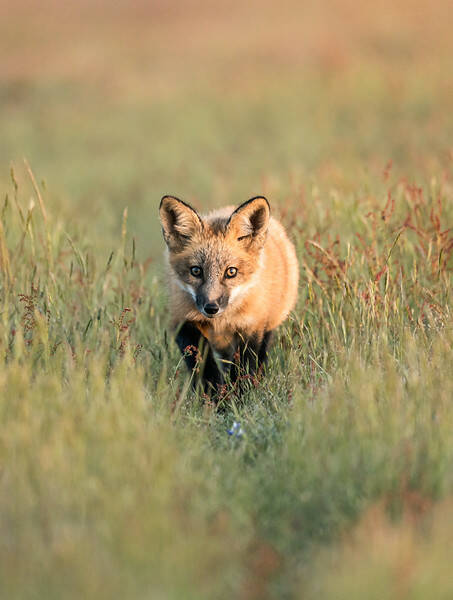Part of what makes San Juan Island unique is the generations of foxes that call the island home. American Camp appears to be one of their favorite places. Recently, word of these foxes has spread, attracting hoards of tourist photography groups that disrespect the local wildlife.
The red fox was introduced to the island multiple times throughout the 20th century to control an overpopulation of rabbits. Ironically the rabbits were also brought to the region by humans. Now, both gray and red foxes can be seen throughout the island. They are curious and often do not appear to be very timid. The San Juan Island National Historical Park held an in-person public meeting on March 31 to discuss the issue, where 35 attendees, mostly longtime islanders, showed up.
National Park Superintendent Elexis Fredy, said “The bottom line is they want to know what the park is doing and why they aren’t doing more,” she said. “I think half people felt satisfied and half people felt disappointed.”
Brad Pillow is an avid fox photographer and a local of 45 years. “I’d say last year was the worst I’ve seen with the fox photography, and I suspect it is because of the pandemic. People were picking up other hobbies,” he said. “There’s been a lot of tour groups. They don’t even always get permits, they just show up.”
The park has a plan, but Fredy explained there are limitations when it comes to managing the problem. One of the main issues is funding along with the island’s housing problem making it difficult to bring more employees to the park- leaving them to be understaffed with a tall order to fill in terms of protecting and monitoring all the rare ecosystems in the park.
“Our energy is already spread so thin trying to protect the marble butterfly [and other endangered species] from extinction,” Fredy said.
What the San Juan National Historical Park is doing to protect the fox is establishing rules for the well-being of the fox. Visitors should stay 75 feet away from the animals, not feeding foxes, or any wildlife, and dogs are no longer allowed on the bluffs. Close encounters with wildlife are discouraged. Instead, people should stay out of the animal’s space, and use park restrooms.
Fredy added that people who don’t follow the rules either seem to be unaware or they just don’t care. To educate people about the problem, the park has installed signs throughout the park.
The new signage also guides visitors to stick to clear walking paths. Intersecting the main trails are dozens of faint trails made by the fox that zigzag through the grassland. These are for paws only, not human feet.
While humans may accidentally wander through the fox trails, occasionally the fox pass through the human paths as well. If one comes across a fox, the simplest solution is to get out of the way.
“I began to notice,” Pillow said, “That if I see a fox approaching on the trail, it will stop in its tracks. If I moved to the side, it will continue on and pass on through.”
Pillow said he also observed that if a young fox draws near to humans, it is most likely curious, whereas an adult fox approaching a human is most likely used to being fed.
Feeding the fox and other wildlife may seem fun, however, it alters their behavior and their ability to raise young properly. Handouts can cause animals to become unnaturally bold, aggressive, or undermine their territory as they grow older.
Since the park does not have the funding to hire more people to keep an eye on the park, longtime islanders concerned with the fox, such as Pillow, have formed what they call the Fox Brigade. This brigade is full of locals volunteering their time to go out and correct those who are disrespecting the fox. The group is on its third year of existence, and Fredy said it has only grown increasingly popular.
As a result of the March 31 public meeting, the park is now teaming up with nearby national park law enforcement personnel. While involving a stronger authority may be helpful, Fredy is also wary of bringing too much law enforcement to the park.
“Vigilantes out on the prairie is not productive,” she said.
She and her coworkers still want visitors to feel welcome visiting the park, especially due to its historical importance and the beauty of the area.
With these policies in place, the park is hoping to balance respect and protection of the park ecosystems without deterring tourists.
“I’ve been here so many years, I’m starting to notice generations of foxes. Last year’s kits are going to be this year’s parents. To get to see them over a year’s time develop from a kit to a full-grown fox is really special. It makes me feel like a grandparent,” said Pillow. “The meeting was a good step in the right direction towards putting together a plan of action to help mitigate the issues with the fox.”



